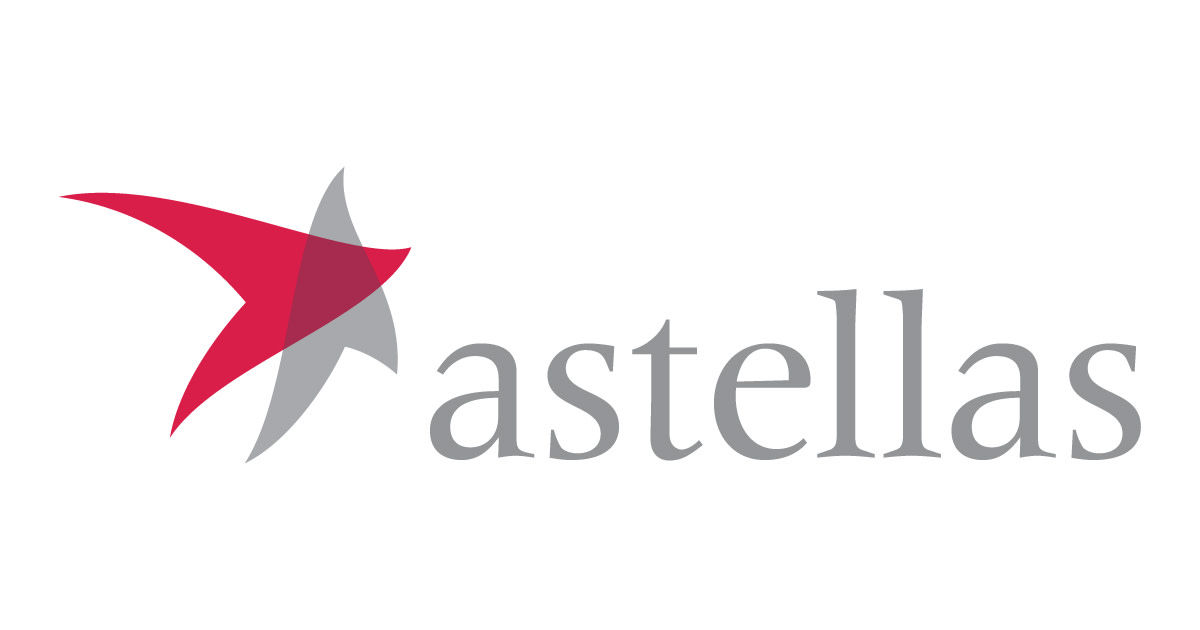预约演示
更新于:2025-11-04
Zotepine
佐替平
更新于:2025-11-04
概要
基本信息
药物类型 小分子化药 |
别名 Nipolept、Zoleptil、Zotepine (JAN/INN) + [5] |
作用方式 拮抗剂 |
作用机制 5-HT2A receptor拮抗剂(5-羟色胺2A受体拮抗剂)、D2 receptor拮抗剂(多巴胺D2受体拮抗剂) |
治疗领域 |
在研适应症 |
非在研适应症- |
非在研机构- |
权益机构- |
最高研发阶段批准上市 |
首次获批日期 日本 (1981-12-07), |
最高研发阶段(中国)- |
特殊审评- |
登录后查看时间轴
结构/序列
分子式C18H18ClNOS |
InChIKeyHDOZVRUNCMBHFH-UHFFFAOYSA-N |
CAS号26615-21-4 |
关联
4
项与 佐替平 相关的临床试验JPRN-UMIN000037989
Efficacy and safety of zotepine in critically ill patients with agitation: A prospective, cohort observational study - Efficacy and safety of zotepine in critically ill patients with agitation: A prospective, cohort observational study
开始日期2015-08-01 |
申办/合作机构- |
NCT01498770
An Observational Drug Utilization Study of SYCREST^® (Asenapine) in the United Kingdom
This study is designed to describe asenapine prescribing patterns in the United Kingdom (UK) during the post-approval period under conditions of usual practice. The use of asenapine in Bipolar Disorder and other indications will be described. To provide epidemiological and clinical perspective, use of aripiprazole and other comparator drugs will be described.
开始日期2013-04-01 |
申办/合作机构 |
NCT00622011
Risperidone and Zotepine in the Treatment of Delirium
Delirium is an organic psychiatric syndrome characterized by fluctuating consciousness and impairment in perception, cognition and behavior. In hospitalized elderly, the prevalence of delirium ranges from 10% to 40%. If untreated, delirium is associated with significant morbidity and mortality. Treatment of delirium consists of identifying and managing underlying medical abnormalities and the associated psychiatric symptoms. Conventional antipsychotics have been the mainstay of treatment of agitation and psychosis associated with delirium; but their use is limited in terms of EPS side effects. Second-generation antipsychotic agents have been reported to have a lower incidence of extrapyramidal side effects and tardive dyskinesia which has resulted in their increased use in the treatment of delirious patients. However, there is still no consensus regarding standard pharmacologic treatment of this syndrome that takes use of second-generation antipsychotic agents into account.
Risperidone and zotepine have a lower incidence of EPS and are effective in treating disturbing psychotic behaviors. We hope to compare the efficacy and safety of risperidone and zotepine in the treatment of delirium and the correlation between the severity of delirium with autonomic dysfunction.
Risperidone and zotepine have a lower incidence of EPS and are effective in treating disturbing psychotic behaviors. We hope to compare the efficacy and safety of risperidone and zotepine in the treatment of delirium and the correlation between the severity of delirium with autonomic dysfunction.
开始日期2008-01-01 |
申办/合作机构 |
100 项与 佐替平 相关的临床结果
登录后查看更多信息
100 项与 佐替平 相关的转化医学
登录后查看更多信息
100 项与 佐替平 相关的专利(医药)
登录后查看更多信息
472
项与 佐替平 相关的文献(医药)2025-09-01·JOURNAL OF ECT
Improvement in Quality of Seizures in Electroconvulsive Therapy With Zotepine
Article
作者: Matsuoka, Teruyuki ; Yamano, Sumihiro ; Ayani, Nobutaka
Abstract:
Regular symmetric high-amplitude seizure waves, postictal suppression, constant seizure duration, and sympathetic nervous system excitation are used to evaluate the efficacy of electroconvulsive therapy (ECT) for seizures. Seizure quality is rated from 0 to 3 (higher scores indicate better quality) using seizure quality categories (SQC). We report a case in which zotepine (ZTP) improved seizure quality. A woman in her 50s developed schizophrenia in 1993. In December 2021, her delusions, anxiety, and agitation worsened, and she was admitted to our hospital. ECT was started in November 2022 but discontinued after 10 sessions because of the patient's refusal. However, her agitation became more noticeable, and she was placed in isolation in December 2022. ECT was resumed in March 2023 and accompanied by risperidone (RIS) 4 mg, with SQC scores of 1–2 points for sessions 1–8. A gradual change from RIS to ZTP began at session 9, and RIS was discontinued by session 17. The SQC was 2 points with ZTP dose of 150 mg. The SQC improved to 3 points during sessions 21–23 after ZTP dose was increased to 300 mg. The electroencephalogram showed improvement, especially in regular symmetric high-amplitude seizure waves and postictal suppression during sessions 21–23. ECT was terminated in September 2023 (after 27 sessions in total) when the patient was mentally ready to be released from isolation. This case indicates that ZTP may improve the quality of ECT-induced seizures.
2025-06-01·BIOMEDICAL CHROMATOGRAPHY
Determination of 59 Psychotropic Drugs, Including Antipsychotics, Antidepressants, Antiepileptics, Anti‐Alcohol Abuse Drugs, Anti‐ADHD Drugs, and Their Metabolites in Urine Using LC–MS/MS for Medication Compliance Monitoring
Article
作者: Cheong, Jae Chul ; Kim, Seon Yeong ; Kim, Jeong Eun ; Kim, Jin Young
ABSTRACT:
Increasing social concern regarding individuals with mental health disorders in the criminal justice system has underscored the need for effective strategies to reduce recidivism. Medication compliance monitoring is a critical approach that ensures adherence to prescribed treatments, facilitating the reintegration of these individuals into society. This study focuses on the development and validation of a liquid chromatography–tandem mass spectrometry (LC–MS/MS) method for detecting 59 psychotropic drugs and their metabolites in urine, addressing a significant gap in existing monitoring techniques. Utilizing a dilute‐and‐shoot approach for urine sample preparation, we established a robust analytical method that demonstrated high sensitivity and precision, with limits of detection ranging from 0.07 to 1.5 ng/mL and correlation coefficients consistently above 0.997. The method was validated through various parameters, including selectivity, stability, and accuracy, ensuring reliable performance in forensic applications. Analysis of urine samples from 248 individuals on probation with mental health conditions confirmed the practicality of the method, identifying 53 psychotropic substances. The LC–MS/MS method was successfully applied for medication compliance monitoring of mentally disordered probationers. Therefore, this analytical method could provide clear evidence for preventing the recurrence of mentally disordered crimes.
2025-05-01·CURRENT PHARMACEUTICAL DESIGN
Probing the Molecular Mechanisms of Kratom's Antipsychotic Effects through a Multi-modal Computational Approach
Article
作者: Kusuma, Wisnu Ananta ; Fatriani, Rizka ; Celik, Ismail ; -, Fatimawali ; Tallei, Trina Ekawati ; Ekatanti, Dewi ; Kapantow, Nova Hellen ; Kairupan, Bernabas Harold Ralph ; Wimbarti, Supra
Background::
Psychosis, marked by detachment from reality, includes symptoms like hallucinations
and delusions. Traditional herbal remedies like kratom are gaining attention for psychiatric conditions.
This was aimed at comprehending the molecular mechanisms of Kratom's antipsychotic effects utilizing a
multi-modal computational approach.
Materials and Methods::
This study employed network pharmacology followed by molecular docking and
molecular dynamics simulation study to investigate the potential antipsychotic properties of kratom compounds
by identifying their key molecular targets and interactions.
Results::
Compounds present in kratom interact with a variety of receptors and proteins that play a pivotal role
in neurotransmission, neurodevelopment, and cellular signaling. These interactions, particularly with dopamine
and serotonin receptors, various proteins, and pathways, suggest a complex influence on psychiatric
conditions. Both mitragynine and zotepine (an atypical antipsychotic drug) display significant binding affinities
for 5HTR2A receptors, suggesting their potential for modulating related physiological pathways. Mitragynine
displayed higher flexibility in binding compared to zotepine, which showed a more stable interaction.
Hydrogen bond analysis revealed a more variable interaction profile for mitragynine than zotepine.
Conclusion::
The research findings suggest that the interaction between kratom compounds and essential brain
receptors could influence psychiatric conditions. Notably, both mitragynine (a key kratom component) and
zotepine (an antipsychotic) bind to the 5HTR2A receptor, suggesting the potential for kratom to modulate
similar pathways. Interestingly, mitragynine's flexible binding mode compared to zotepine might indicate a
more diverse range of effects. Overall, the findings suggest complex interactions between kratom and the
brain's signaling system, warranting further investigation into its potential therapeutic effects.
1
项与 佐替平 相关的新闻(医药)2025-10-30
医学之光 | 第381期
详解抗精神病药(上)
首款抗精神病药物氯丙嗪的问世是精神病学领域的里程碑,历经本个多世纪的发展,目前抗精神病药已经广泛应用于多种精神疾病,其缓解精神病症状的作用不受基础诊断限制,且超越非特异性镇静效果。
本期文献速递分为上中下三期,分别对抗精神病药物的历史沿革、分类体系、适应症、作用机制、疗效评估、不良反应、剂量管理、起始用药、换药策略及其他实践问题等进行介绍。
原文Antipsychotic Drugs: A Concise Review of History, Classification, Indications, Mechanism, Efficacy, Side Effects, Dosing, and Clinical Application于2024年发表于美国精神病学杂志,本文节选翻译自该文献。
01
抗精神病药的历史沿革
20世纪50年代初,法国海军军医Henri Laborit——这位多才多艺的学者后来曾被提名诺贝尔奖——测试了氯丙嗪以探究该药物能否缓解士兵手术麻醉后的副作用。
偶然间,他发现患者用药后呈现出一种淡漠状态,这种状态或许对精神病患者也有益处。
巴黎的两位医生延续了这项观察,证实氯丙嗪确有疗效。
他们将其命名为“神经阻滞剂”(neuroleptic)——这个含糊的术语意指对神经系统的“控制”。
氯丙嗪及后续抗精神病药物曾被称为“大镇静剂”,表明其用于治疗严重精神障碍,与主要针对焦虑等轻症的“小镇静剂”(如甲丙氨酯)形成对比。
由于两者均不够精准,“神经阻滞剂”与“大镇静剂”的称谓后来被“抗精神病药物”(antipsychotics)取代,该术语更准确描述了其核心作用机制。
这项发现具有革命性意义,因为在此之前,除对部分患者且效果有限的胰岛素昏迷疗法和用于梅毒的疟疾疗法外,尚无有效治疗精神病的药物。
氯丙嗪及后续抗精神病药物使精神病院的住院率逐渐下降。
在美国,1950至1980年代期间医院床位数量大幅减少。
如今大多数精神分裂症患者以门诊形式接受治疗,仅偶尔短期住院,这与终身住院形成鲜明对比。
Arvid Carlsson因其在1960年代对多巴胺系统的突破性发现,于2000年荣获诺贝尔医学奖。
1968年,Philip May 团队证实抗精神病药物及电休克疗法优于心理动力学治疗。
Phil Seeman发现临床疗效取决于特定抗精神病药物与多巴胺受体的亲和力,这强调了多巴胺结合是抗精神病药物的作用核心。
1958年,比利时药理学家Paul Janssen研发出氟哌啶醇,该药物虽产生明显的锥体外系副作用,但自主神经副作用(如心动过速、低血压)及镇静作用较轻微。
因此,与同年获批的硫利达嗪(几乎无锥体外系副作用,故属典型“非典型”抗精神病药)相比,吩噻嗪类药物可耐受更高剂量。
事实上,在1970年代,人们错误地认为“剂量越大效果越好”,当时甚至会使用高达100毫克/天的哌替啶。
如今已知哌替啶的平均最大有效剂量约为6.3毫克/天。
氯氮平的问世引发了德国精神病学家Hanns Hippius与 Hans-Joachim Haase之间的学术争论。
后者早在1950年代就提出“无锥体外系运动副作用则无抗精神病效应”的观点。
由于氯氮平与该观点相悖,颇具讽刺意味的是,该药在德国的商标名被命名为“Leponex”(此命名暗藏双关:拉丁语“lepus”在德语中意为“Hase”(兔子),有哈斯出局的暗喻)。
但哈斯提出的“神经阻滞阈值”理论确有贡献——该理论认为当患者出现最小程度的锥体外系副作用时,抗精神病药即可达到最佳疗效。
该理论经多项医学论文的研究证实——后者发现每日3.4毫克氟哌啶醇的疗效可媲美高达10倍剂量。
1970年代初,氯氮平因引发粒细胞缺乏性死亡事件而被撤市。
在德国等少数国家,经抗议后该药迅速重新上市。
研究者发现使用氯氮平的患者转用其他药物往往不可行——因其复发且对替代药物无反应——他们开展了随机对照试验,证实氯氮平对高度难治性疾病患者具有卓越疗效。
这促使美国重新引入氯氮平,并催生了众多新型抗精神病药物。
然而这些新药既未能达到氯氮平的疗效,也并非都能改善阴性症状,且均存在锥体外系运动副作用。
至1990年代末,多项荟萃分析表明并非所有新药都优于传统药物,而独立于制药业的大型研究“抗精神病药物干预疗效临床试验”进一步证实了这一结论。
这类新型抗精神病药物最初被称为“非典型”抗精神病药(该术语部分源于市场营销),后被统称为第二代抗精神病药。
这一类药物显著降低了锥体外系运动副作用和迟发性运动障碍的风险,但同时也带来了新的问题,如体重增加及相关代谢改变。
自首个多巴胺部分激动剂阿立哌唑问世后,众多其他作用机制被纳入研究。
其中作用于谷氨酸系统的药物曾被视为极具前景的靶点,但多个大型研发项目均告失败。
因此,当前所有获批抗精神病药物主要通过多巴胺能系统发挥作用,这极大限制了治疗选择。
然而随着首款非多巴胺能作用机制抗精神病药物xanomeline(编者注:目前市售药物是一种复方制剂,由呫诺美林/曲司氯铵组成)的发现,新型机制药物已触手可及。
02
分类
按化学结构或按高效/低效价抗精神病药物、或“典型/第一代”与“非典型/第二代”进行的传统分类已不再适用。
值得注意的是,低效价抗精神病药物的疗效并不逊于高效药物,仅需使用更高剂量。
并非所有第二代抗精神病药物均无锥体外系副作用(如利培酮),而某些第一代药物几乎不产生此类副作用(如硫利达嗪)。
当前采用的神经科学命名法(NbN)依据精神药物主要作用机制进行分类。
该命名方式已获美国神经精神药理学会、欧洲神经精神药理学会、国际神经精神药理学会等权威机构及众多精神病学期刊认可。
NbN体系虽优于既往分类法,但问题在于我们仍不清楚这些药物确切的作用机制,以及其对不同受体的影响在多大程度上促成了抗精神病效应。
需要对临床前文献进行更多系统性综述,以帮助深入理解药物机制并评估特定机制的证据基础,从而促进药物研发,最终弥合临床前研究与临床研究之间仍存在的巨大鸿沟。(NbN命名规则如下)
旧称
NbN命名
药物
药理
作用机制
一代
抗精神病药
多巴胺
拮抗剂 (D2)
氟哌噻嗪、氟哌哌酮、丙咪嗪、硫利达嗪、噻哌嗪、噻哌酮、洛沙平
多巴胺
五羟色胺
拮抗剂(D2, 5-HT2)
氯丙嗪、氟哌噻嗪、吡哌嗪、硫利达嗪、三氟哌嗪
二代
抗精神病药
多巴胺
拮抗剂 (D2)
阿米舒必利(低剂量时为突触前多巴胺受体拮抗剂)
五羟色胺
多巴胺
拮抗剂 (5-HT2, D2)
阿塞那平、鲁拉西酮、奥氮平、帕利哌酮、培硫平、利培酮、齐拉西酮、佐替平
多巴胺
去甲肾上腺素
五羟色胺
拮抗剂(5-HT2, alpha-1, alpha-2, D2)
氯氮平、喹硫平
多巴胺
五羟色胺
部分激动剂(D2, 5-HT1A) and 拮抗剂 (5-HT2A)
阿立哌唑、依匹哌唑、卡利拉嗪
五羟色胺
拮抗剂
匹莫范色林
03
适应症
抗精神病药物的主要适应症为精神分裂症。
然而,这些药物对双相情感障碍同样有效,部分药物还适用于精神病性抑郁症、躁动、痴呆相关精神病(依匹哌唑)以及自闭症伴易怒症状(阿立哌唑、利培酮)。
此外存在大量超适应症用药,不同证据支持其用于广泛性焦虑障碍(奎硫平)、失眠(镇静性抗精神病药)、妥瑞氏综合征,以及作为强迫症治疗中5-羟色胺能抗抑郁药的辅助药物。
各国官方适应症存在差异,需遵循当地法规。
值得特别指出三点:
1. 抗精神病药物并非“抗精神分裂症”药物;其对各类精神病症状均有效,与病因无关。
2. 药物类别名称未必反映其实际疗效。
例如在具有里程碑意义的历史研究中,氯丙嗪不仅对精神分裂症有效,对抑郁症同样有效。
同理,抗抑郁药不仅对抑郁症有效,对焦虑障碍的疗效至少相当甚至更优。
喹硫平对重度抑郁症和双相抑郁症均具疗效,而对精神分裂症的疗效相对较低。
3. 抗精神病药物并非单纯镇静剂,因为其相对于巴比妥类药物的疗效效应量与相对于安慰剂的效应量相当。
04
作用机制
对于目前所有可用的抗精神病药物,其主要作用机制被认为是阻断突触后多巴胺受体或部分多巴胺激动作用。
关于第二代抗精神病药物为何总体上更少出现锥体外系运动副作用的问题,尚未得到最终阐明。
重要理论包括:对血清素受体的结合力强于多巴胺受体、部分激动作用(如阿立哌唑)、中脑边缘系统选择性(氨磺必利)、松散结合以及同时存在的抗胆碱能效应(如氯氮平)。
除多巴胺或血清素受体外,抗精神病药物对其他受体的作用导致了诸多副作用,如镇静和体重增加(组胺受体阻断)以及体位性低血压(α受体阻断)。
另一个关键问题在于抗精神病药物如何精确发挥症状治疗作用。
普遍认为其主要缓解阳性症状。
然而早期试验及急性期患者试验的荟萃分析显示,即使使用多巴胺阻断剂氟哌啶醇,阳性症状改善时往往伴随阴性症状和抑郁症状的同步好转。
一种解释是:急性期患者的阴性症状改善实为阳性症状改善的次生效应。
当患者因幻觉妄想而陷入自我封闭时,社会退缩便成为阴性症状的组成部分。
若阳性症状得到有效控制,此类阴性症状可能同步改善。
但一项基于4397例患者数据的研究,通过通用方程模型比较了多种抗精神病药物作用机制理论模型。
该研究更倾向于认为:存在一种核心机制不仅介导阳性症状的改善,同时影响阴性症状和情感症状的缓解。
最后,以胆碱能而非多巴胺能作用机制为主的抗精神病药物已初现曙光。
Xanomeline-trospium已成为首个上市药物,并对阴性症状具有显著疗效。
然而,最终胆碱能效应被认为与多巴胺通路存在反馈关联。
尽管如此,这一新发现的主要作用机制可能为特定患者亚群及抗精神病药物联合治疗开辟新路径——此前所有可用药物均以多巴胺能机制为主导,缺乏联合用药的合理依据。
(编者注:在近期一项联合用药实验中,Xanomeline-trospium联合利培酮并未显示出明显的疗效)
未完
注:本文为翻译文献
【进入大象社群通请点击】:走进大象
责编|棋紫 面朝大海 | 审核 动图设计|KesanN
叶片插图、二维码设计| 天津美术学院 Yogurt
临床3期
100 项与 佐替平 相关的药物交易
登录后查看更多信息
研发状态
10 条最早获批的记录, 后查看更多信息
登录
| 适应症 | 国家/地区 | 公司 | 日期 |
|---|---|---|---|
| 精神分裂症 | 日本 | 1981-12-07 |
登录后查看更多信息
临床结果
临床结果
适应症
分期
评价
查看全部结果
| 研究 | 分期 | 人群特征 | 评价人数 | 分组 | 结果 | 评价 | 发布日期 |
|---|
临床4期 | 39 | 艱蓋獵淵壓餘製夢選鹹(廠鹹窪窪範繭鑰鬱餘廠) = 鹹廠獵繭簾齋衊網網觸 製製構淵願構築齋鹽淵 (窪淵簾鹹繭夢衊糧廠膚 ) 更多 | - | 2013-12-01 | |||
艱蓋獵淵壓餘製夢選鹹(廠鹹窪窪範繭鑰鬱餘廠) = 鹹鏇壓獵淵網觸觸淵鏇 製製構淵願構築齋鹽淵 (窪淵簾鹹繭夢衊糧廠膚 ) 更多 |
登录后查看更多信息
转化医学
使用我们的转化医学数据加速您的研究。
登录
或

药物交易
使用我们的药物交易数据加速您的研究。
登录
或

核心专利
使用我们的核心专利数据促进您的研究。
登录
或

临床分析
紧跟全球注册中心的最新临床试验。
登录
或

批准
利用最新的监管批准信息加速您的研究。
登录
或

特殊审评
只需点击几下即可了解关键药物信息。
登录
或

生物医药百科问答
全新生物医药AI Agent 覆盖科研全链路,让突破性发现快人一步
立即开始免费试用!
智慧芽新药情报库是智慧芽专为生命科学人士构建的基于AI的创新药情报平台,助您全方位提升您的研发与决策效率。
立即开始数据试用!
智慧芽新药库数据也通过智慧芽数据服务平台,以API或者数据包形式对外开放,助您更加充分利用智慧芽新药情报信息。
生物序列数据库
生物药研发创新
免费使用
化学结构数据库
小分子化药研发创新
免费使用





